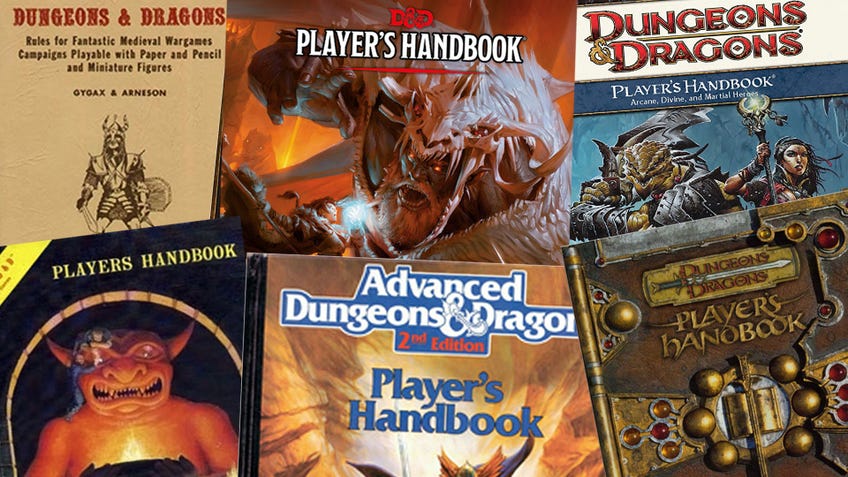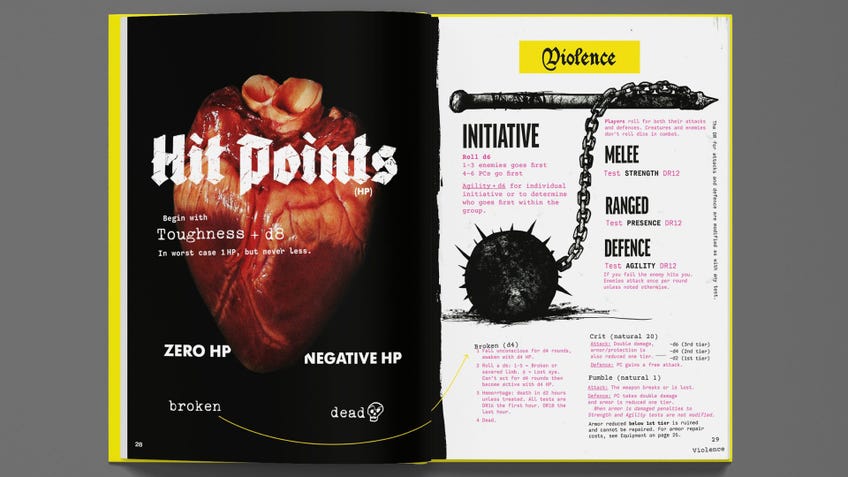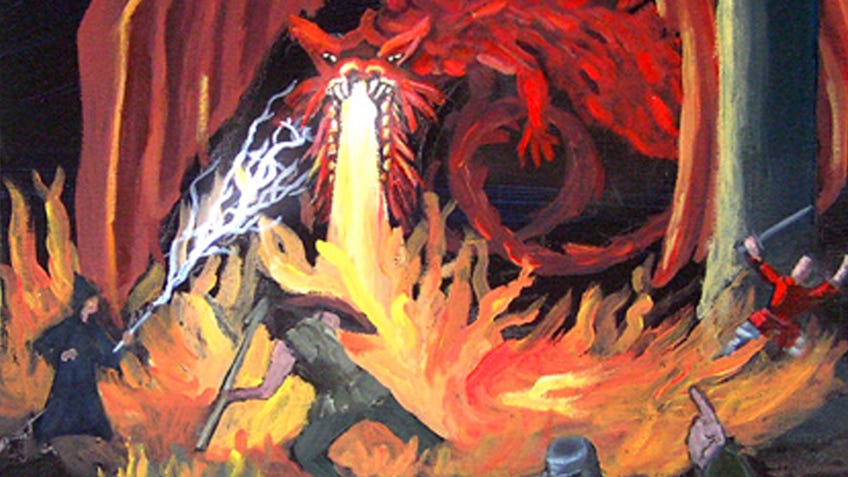What is OSR? A newcomer’s guide to the Old School Renaissance RPGs reviving classic D&D
From retro clones of original D&D to modern successors to ‘70s roleplaying, OSR has never been bigger - or better.
If you’re a fan of tabletop RPGs, you’ve likely come across OSR. But you might be wondering what that even stands for, what OSR games are and why people are playing them.
Let’s clear up one quite confusing point first: OSR stands for both Old School Revival and Old School Renaissance. It’s merely a matter of preference which one you use, but Old School Renaissance tends to be the most common.
In basic terms, OSR is about playing games inspired by much earlier iterations of RPGs - especially classic Dungeons & Dragons from the 1970s and ‘80s, rather than the style of play we have now with D&D 5E. The easiest way to explain where OSR came from, and why it remains so popular today, is by going back to when it all started.
The year is 2000. Wizards of the Coast had bought Dungeons & Dragons from original publisher TSR and, wanting to put its own stamp on the already popular game, created the RPG’s third edition.
Dungeons & Dragons 3E brought a host of updates and changes; most notably, it introduced the now-iconic d20 system, as well as the Open Game Licence. The OGL meant that people and companies other than Wizards of the Coast could use D&D’s game mechanics freely to make and sell their own creations, from crafting dungeons and new monsters to custom adventures.
Despite this aspect being a welcome change, Third Edition itself wasn’t what all players were looking for. In online RPG forums such as Dragonsfoot, people started reminiscing about earlier versions of D&D and how they felt playing it. Many posters felt the third edition brought too many rules into combat and lacked the freedom of fights in older iterations - or the option of avoiding them all together.

Using this new open game licence, a few creators decided to delve back into the old rules and release them for veteran players who were nostalgic for classic Dungeons & Dragons, as well as for newcomers who liked the sound of that style of play but weren’t in the hobby some 20 or 30 years prior when the original books were released - or who did pick up an early copy of D&D, only to discover that without the context of playing wargames in the ‘70s it was pretty hard to decipher.
With OSRIC, people who had been dreaming of their old games had a way to play them again.
In 2006, the Old School Reference and Index Compendium was created. Created by Stuart Marshall and Matthew Finch, OSRIC used the rules of Advanced Dungeons & Dragons released between 1977 and 1979, effectively compiling them into a new book anyone could access. The community loved it; those people who had been dreaming of their old games had a way to play them again, and the newcomers could stop trawling through car boot sales and access an actual ruleset. With all these people playing OSRIC, experiencing old-school games and really enjoying them, the Old School Renaissance was born.
OSRIC itself is what’s described as a ‘retro clone’. These are games that directly copy and release D&D’s original rules. However, with talks of OSR now gaining popularity, people started to look beyond just copying the rules. They wanted to emulate the feeling of classic gaming while still updating play for the modern day. Magazines such as Fight On! and Knockspell were created just to cover all the news and fresh ideas coming out around OSR games, bringing the movement to more people - which opened it up to even more ideas.

With OSR games representing more than just a single ruleset, the elements that make an RPG 'old-school' is something that’s up for debate in the community. However, there are a few general rules most people seem to agree on.
Firstly, old-school games are much more loose and free with rulings. There aren’t rules for every encounter of move - and that’s okay. Rather than looking up how to fight underwater or if your climbing speed would allow you to make a specific jump, DMs just rule in the moment.
Creative play is also highly encouraged. Whether you’re trying to stab an ogre in the eye to blind it or trip up a centaur - as long as it makes sense and the DM agrees, you have tons of flexibility with what you can do. One of the things the third edition of Dungeons & Dragons added that people felt changed this from earlier versions were feats. These gave players more things they could do, but also meant that anyone without the feat was restricted from being able to do those moves; deflecting an arrow or knocking down an enemy while on horseback was limited to those who had them on their character sheet. OSR was a chance to move away from this and back to what many felt was a simpler style of play where rulings took precedence over rules.
The second thing you’ll often find in an OSR game is that your own ability to do something matters more than your character’s. You can’t just do an investigation roll to discover all the secrets in a room - you’ve got to tell the DM exactly where you’re looking and what you’re doing to find those hidden doors and solve puzzles. Pull the book out of the shield to open the door or run your hand along the floor to check for traps in the flagstones. This is where the idea of adventurers always carrying a ten-foot pole into a dungeon comes from.
The next idea common to OSR RPGs is a focus on exploration. Old-school games hand out experience points based on the loot you collect, not the monsters you kill. I honestly love this. It means you won’t just run around killing everything you discover; instead, you’ll be digging into the corners of dungeons and trekking to distant lands to follow rumours of treasure hoards. When players encounter bandits on the road their first thought won’t just be to murder them all and move on - they could bargain with them, distract them or try to sneak past.

Sometimes the best approach is to avoid any kind of combat altogether - which brings me onto the last main thing that stands out in an OSR game, which is that they’re not balanced.
In OSR games, you’re regular folk brave or stupid enough to make your living through looting long-lost tombs and labyrinths.
The world isn’t split into levels for you to work through, and dragons are truly dangerous - if you find one in a dungeon, it will likely kill you. It makes everything feel much more realistic. You’re not medieval superheroes, which is what a lot of OSR fans felt D&D was turning into. Instead, you’re regular folk brave or stupid enough to make your living through looting long-lost tombs and labyrinths. Scary places most people avoid for a reason.
You need to be smart about how you tackle every situation - otherwise, you’ll probably end up dead. The threat of character death is a great way to drive a game forward, where risks feel very real. It adds a lot of tension if the next room could be your last.

With all these rules in mind, people started to tweak them to create totally new games that replicated the old-school feel more than straight D&D gameplay. Mazes & Minotaurs reimagines original D&D as if Gary Gygax and Dave Arneson were first inspired by Greek mythology rather than medieval fantasy, while The Black Hack streamlines the rules to make jumping into a game quick and simple.
There are even games that have totally different rulesets. Dungeon World is an OSR RPG that has all the familiar thrilling dungeon crawls you could want, but uses the modern Powered by the Apocalypse system. There’s Mörk Borg, a bleak apocalyptic world that gives the OSR a heavy metal twist. Or even Mausritter, which sees you facing a dangerous world as tiny mice.
There are so many options for getting into OSR now, whether you want to try the rules or the feel of a game from decades ago. If you find comfort in eighties movies of swords and sorcery, battered copies of old fantasy books and dreams of exploring every corner of a magical world, this could be the genre of RPG you should try next.


